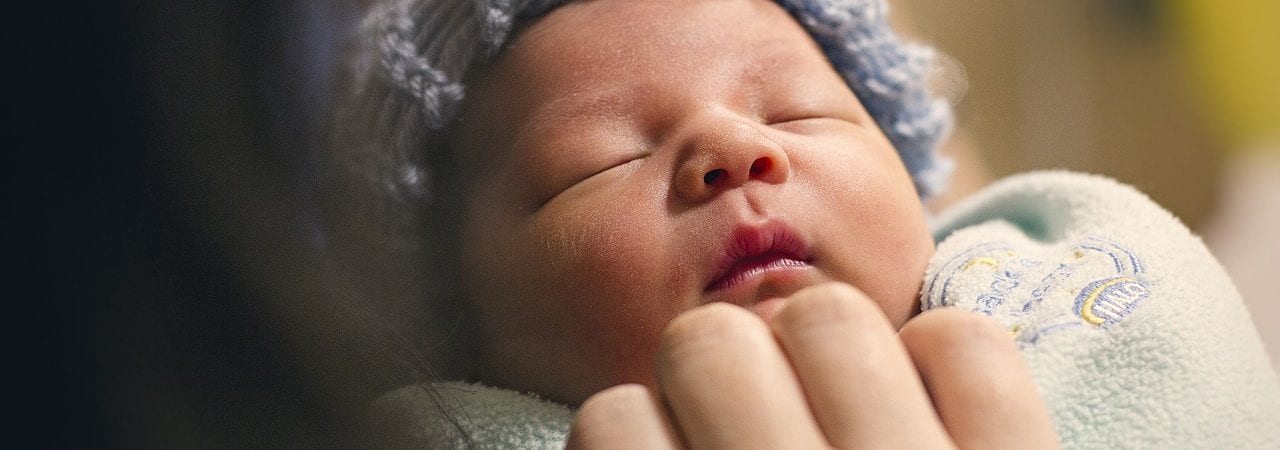
If you are concerned that your baby is not able to fully turn their head or if they have a head tilt to one side, we recommend that you ask your doctor or a physiotherapist or osteopath for advice.
If the range of movement is not restricted too much there are some exercises that parents can do themselves which might help to improve neck range of movement so check out these 5 exercises to help improve the suppleness of your baby’s neck muscles:
1. Side Head Bends
Parents can concentrate on simple exercises that are designed to improve torticollis in infants. These exercises gently stretch the muscles in a baby’s neck and help a healthy development in their neck muscles. Gentle side bends are effective and easy for parents to do at home. Place your little one on their back on a firm surface - your changing mat is great for this. If your baby has a right-side tilt, place your left hand on the top of your baby’s right shoulder and cup your other hand around the top of your baby’s head and apply a gentle stretch to the muscles on the left side of your baby’s neck by holding the shoulder down (pulling down towards your baby’s toes) while side flexing the head to the opposite side holding the stretch for around 5 seconds. Allow your baby to relax for 10 seconds, and then repeat 5 times. Try and aim to do this two times a day!
If your baby has a left side tilt, do the opposite of this, your right hand holding the left shoulder and your left and around the top of your baby’s head.
In general, the side flexion is the more difficult exercise to do but it will give good results if done regularly.
2. Gentle Head Rotations
Another torticollis exercise is to place your baby on their back, again your changing mat is great for this. For a baby that struggles to turn their head to the left, place your left hand on your baby’s right shoulder and hold the shoulder down onto the changing mat. With your right hand, gently turn your baby’s head and face towards the left side.
Again, hold the stretch for 5 seconds before allowing your baby to relax for 10 seconds. Repeat this 5 times and try and do this twice a day.
Forr babies who struggle to turn to the right, do the opposite, with your right hand on your baby’s left shoulder, and rotating the head to the right.
3. Tummy Exercises
It’s extremely important for babies to have tummy time for supervised intervals during the day. A great way of helping an infant’s torticollis is to incorporate their toys into torticollis exercises while they are playing on their tummy. Place all of their toys on their non-preferred side to encourage your baby to tilt their head towards this side. Try and get your little one to hold this position for 5 seconds before removing the toys and letting your baby return to a comfortable position for a few seconds. Try and repeat this 5 times, as long as your little one isn’t becoming frustrated.
4. Carrying Your Baby
Torticollis exercises can also be done while you are carrying your baby. Place your little one face down in your arms, so that they are in a lying position but facing away from you. This position is called sleeping tiger, just like a tiger lying on a tree branch.
If your baby has right torticollis, place their right ear and right side of head on your forearm. Make sure your arm is supporting the right side of your baby’s head and shoulder, placing your hand on their front to keep them secure. Gently lift your forearm to lift your baby’s head from the shoulder, encouraging a side-bending stretch. Do this on the opposite side for baby’s with a left-sided torticollis.
Try and make a conscious effort to hold your baby like this for as long as possible, without stretching their neck too much.
5. Crib Exercises
Repositioning techniques in the crib are an effective way of encouraging head movements for your baby. If your baby is old enough to sit, sit your baby up in their crib and hold or place a toy slightly above them and on the opposite side of their head tilt. This encourages your baby to turn and tilt their head and neck in that direction, encouraging a healthy stretch that is good for babies with torticollis. As with the other exercises, try and hold this for 5 seconds before removing the toy to give your little one a rest. Try to repeat this 5 times a day.
These simple torticollis exercises can make the world of difference for a baby with torticollis. If your baby has torticollis and you’re unsure of what to do, it’s important to seek advice from a medical professional to find out how severe your baby’s torticollis is, and whether there is anything that can be done other than home exercises.


